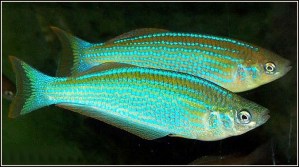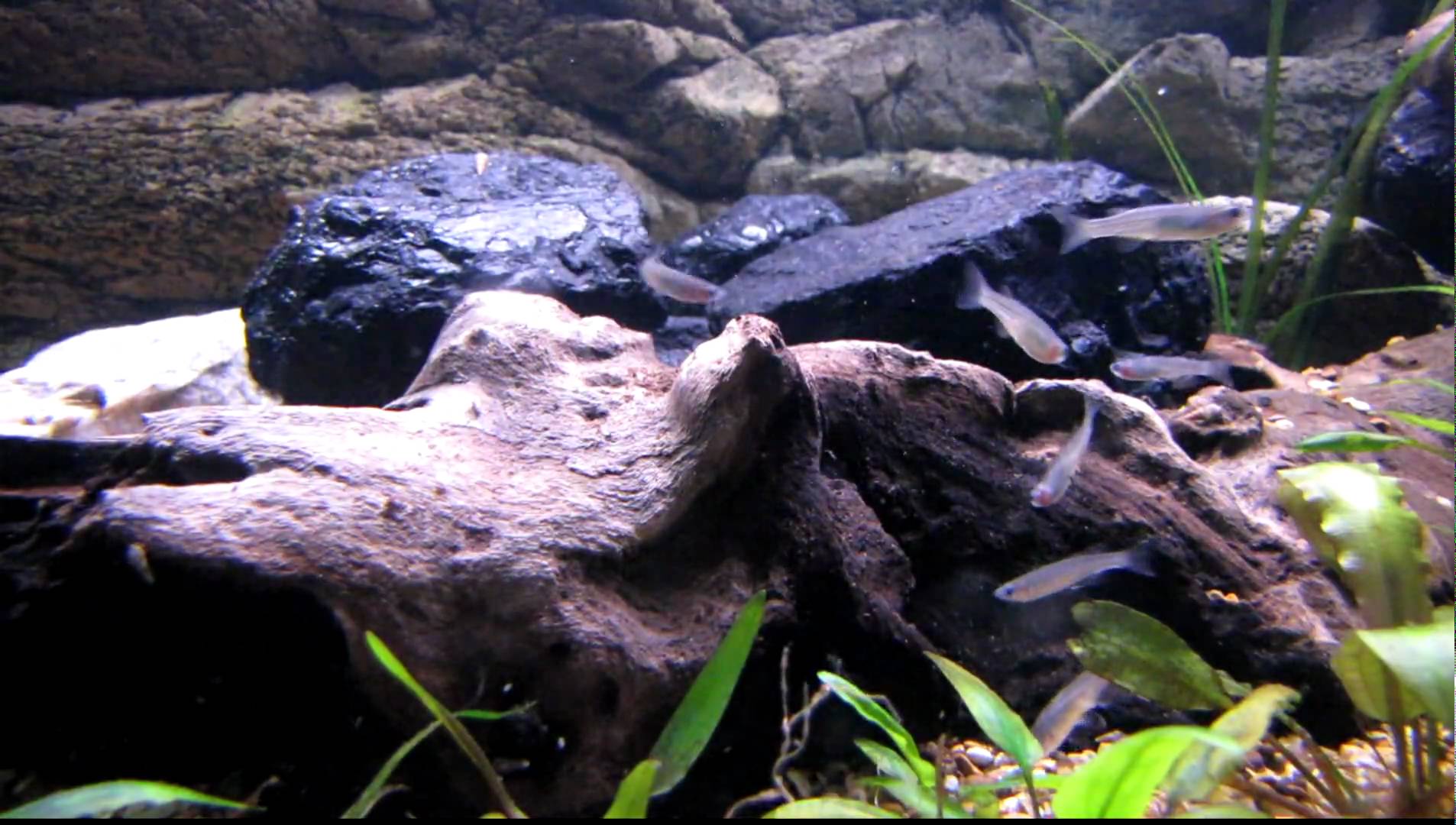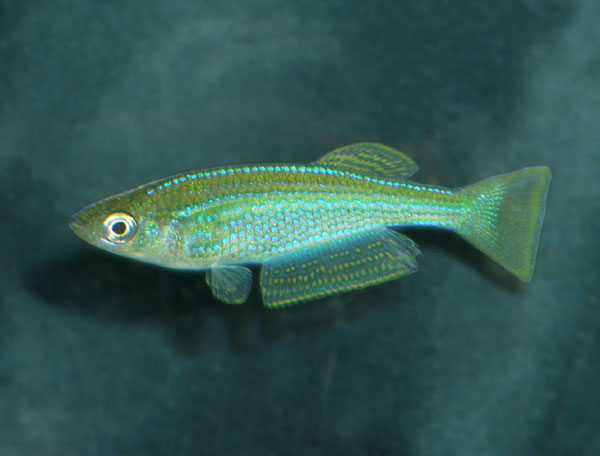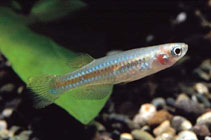
Lamprichthys tanganicanus
FAMILY
Poeciliidae
TAXONOMY
Lamprichthys tanganicanus Boulenger, 1898, Mbiti Rocks, southernmost
Lake Tanganyika.
OTHER COMMON NAMES
English: Lake Tanganyika lampeye, Tanganyika pearl killifish,
Tanganyika killifish.
PHYSICAL CHARACTERISTICS
Grows to 6 in (15 cm) in length. Sexually dimorphic and
dichromatic. Males and females are silvery, sleek, and compressed
and taper to the terminal mouth and caudal peduncle.
Brightly reflective eyes. They have high-set pectoral fins and
dorsal fins set far back, with the origin approximately over the
middle of the anal fin. Caudal fins have scales at the base. Recurved
teeth noticeable on the outer surface of the upper and
lower jaws. Males have an anal fin with a broad base; the rays
are shorter than in females. Eight or nine lines of very bright
iridescent blue spots along the body, with yellowish spotting
on dorsal, anal, and caudal fins and yellow pelvic fins. All observed
colors and patterns vary widely, depending on the angle
of the lighting. Female are smaller than males, with rounded
fins. Shorter dorsal and anal fin base, anal fin rays longer than
in the male. The body is silvery or bluish, and the fins are
faintly yellow or orange.
DISTRIBUTION
Endemic to Lake Tanganyika.
HABITAT
Rocky shores (not sandy areas) out to a depth of about 30 ft
(10 m).
BEHAVIOR
A benthopelagic fish moving in large schools with conspecifics
and sometimes in schools of native freshwater herrings. Despite
its predilection for schooling, individuals wander about
apart from schools. Males are not aggressive toward each
other. Fry form huge schools in the hundreds and even in the
thousands. In aquaria newly hatched fry form schools at the
water surface immediately upon hatching. Fry must be reared
apart from the adults.
FEEDING ECOLOGY AND DIET
Feeds on aquatic and terrestrial insects, such as chironomid larvae,
termites, and beetles, as well as small crustaceans, ostracods,
fish scales, and small fish. The elements of this diet indicate
feeding from the bottom to the surface of the water column.
The recurved teeth on the outer surface of the upper and lower
jaws facilitate the capture of chironomid larvae and ostracods on
rocky substrates. Fish scales and small fishes indicate midwater
feeding, while terrestrial insects suggest surface feeding. Aquatic
vegetation does not seem to play a part in the diet.
REPRODUCTIVE BIOLOGY
A bottom spawner, utilizing cracks and crevasses for its eggdeposition
sites. A male and female meeting in midwater descend
to the rocky substrate. The female positions herself close
to a crack or crevasse in the rocks, where she ejects an egg,
which is fertilized by the male. The eggs are not adhesive but
become wedged in place. In aquaria they make use of a similar
arrangement of rocky crevasses but also lay their eggs in
spawning mops and even on the bare bottom of the aquarium.
The eggs are large, 0.1 in (3 mm), but difficult to see. Eggs
eye-up in about a week and hatch in two to three weeks.
CONSERVATION STATUS
Not listed by the IUCN.
SIGNIFICANCE TO HUMANS
Occasionally appears in the aquarium trade.
Photo Gallery of - Tanganyika pearl lampeye





 Animalia Life
Animalia Life